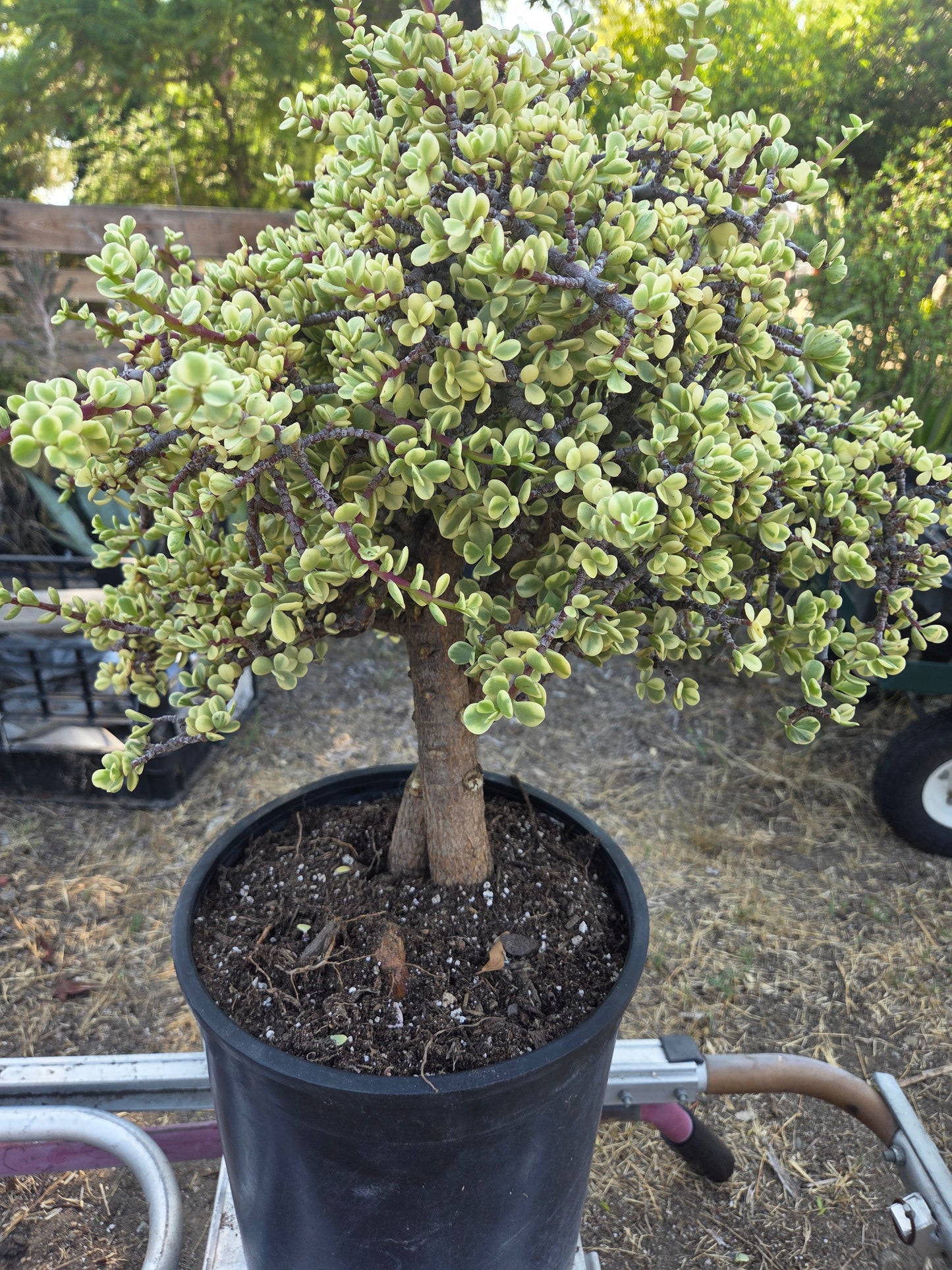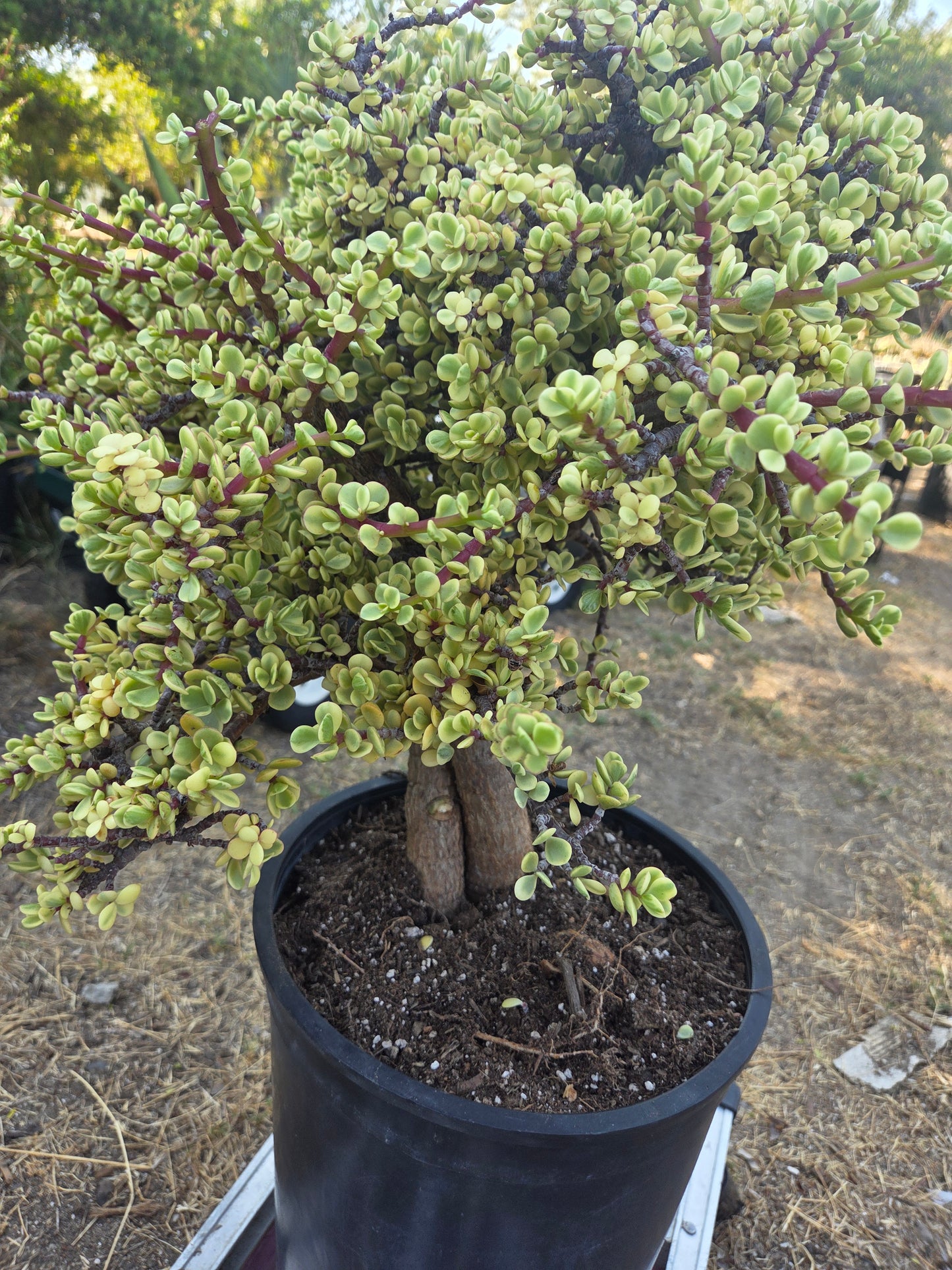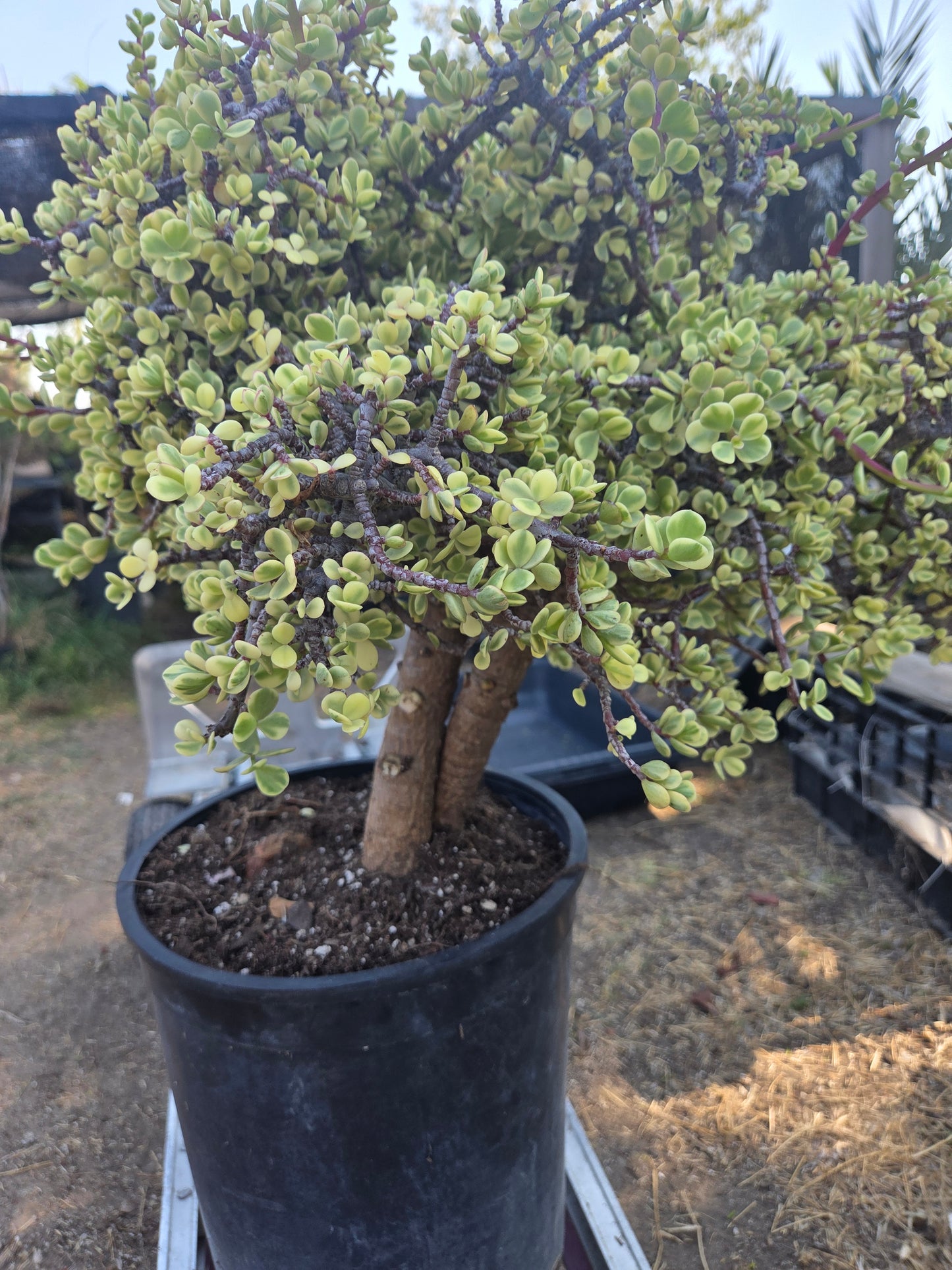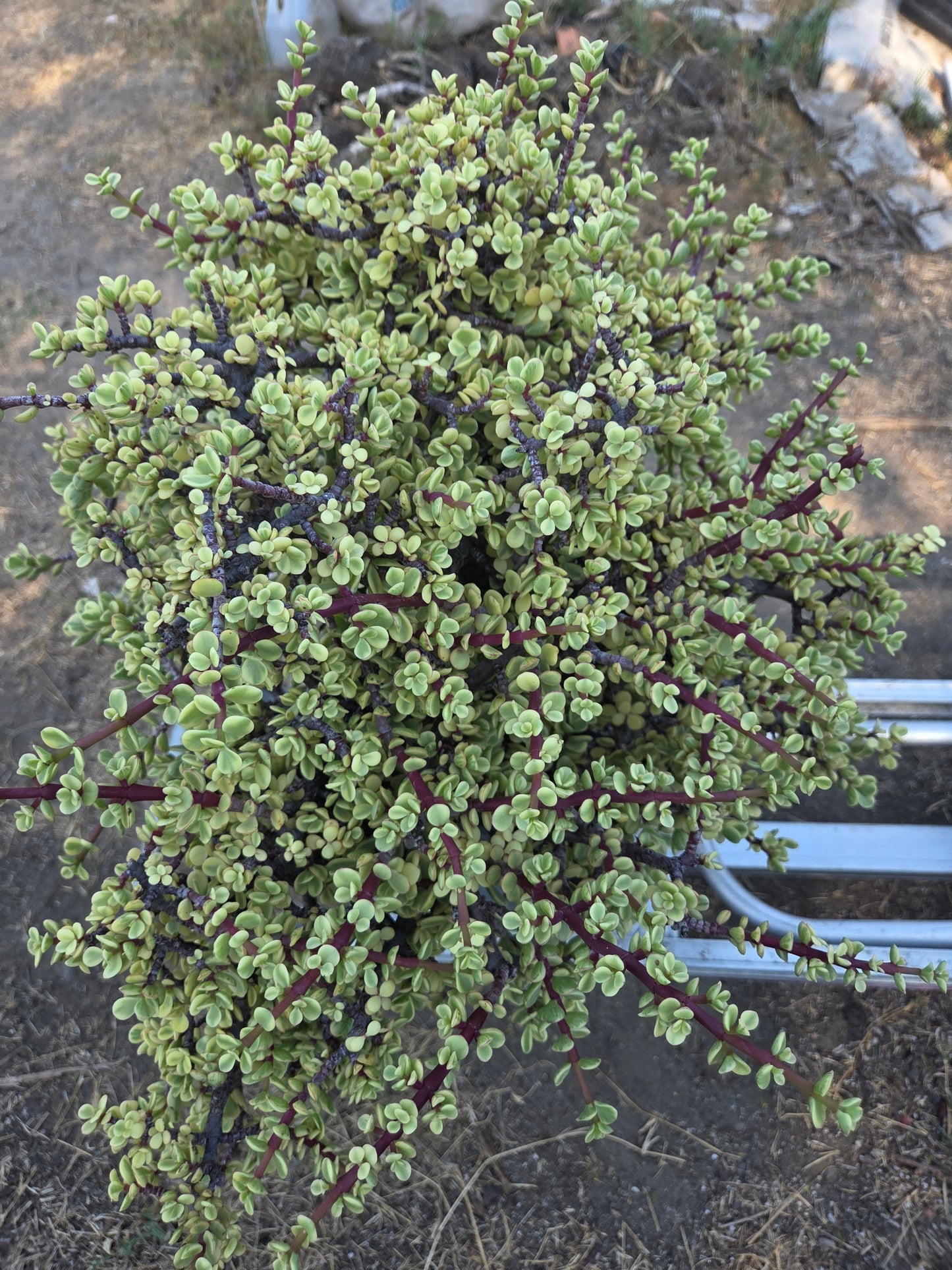Beaultiful Desert Plants
Portulacaria Afra Variegated Tree "Variegated Elephant Bush Tree" Bonsai Tree
Couldn't load pickup availability
Portulacaria Afra Variegated Tree
Elephant Bush Variegated Tree
Bonsai Tree
*Ship Bare root
*We only Ship Priority
Portulacaria Afra variegated Tree " Variegated Elephant's Bush Tree"
General Information:
Portulacaria afra, a South African native, is also known as Small-Leaf Jade or Elephant Bush (due to it being part of the African elephant's diet). This succulent makes an excellent plant for beginning bonsai enthusiasts due to its easy care and ability to take to many shapes. In its natural environment the Dwarf Jade may grow as tall as 12 feet.
Because this plant is not a North American native, it cannot be collected in the wild but may be purchased from DallasBonsai.com throughout most of the year.
Tree's Attributes:
The trunk of this fleshy wooded succulent is variegated plants. The variegated leaves are small and round, opposite, and thick because of their high moisture retention. The small blossoms range from pale pink to purplish, and will only bloom in winter when the plant senses changes in the amount of sunlight.
Temperature/Lighting/Location:
Dwarf Jade is considered a true indoor and outdoor bonsai, tolerant of a wide range of growing conditions. It is, however, a tropical and as such cannot be exposed to long periods of cold; freezing temperatures will kill it. When grown indoors the plant should be exposed to natural sunlight through a window, and if not possible, fluorescent lights placed very close to it. Full outdoor sun in appropriate climates will result in fast growth of foliage.
Watering:
Portulacaria afra, being a succulent, does not need frequent watering. While it will tolerate more water than many bonsai, still, be cautious about over-watering – allow the soil to become nearly dry in between watering. The interesting thing about these plants is that unlike most bonsai, jade gives off clearly visible signs of needing water – the leaves become flattened and may wrinkle. Always use a well-draining soil.
Fertilizing:
Dwarf Jade should be fertilized about every four weeks throughout spring and summer with a well-balanced formula. No special mix or instructions are required. This is a fast-growing bonsai when fertilized and cared for properly. Refrain from fertilizing in the winter.
Pruning/Training:
Shapes – informal upright, root-over-rock, slanting, full cascade. Forest arrangements can also be quite striking with this specimen.
These succulent bonsai are difficult to train by wiring. The branches are fragile and tend to break under too much pressure. Pinching foliage and guiding branch growth via pruning are more effective ways of achieving the shape you want. Extensive pruning is easier if the plant is allowed to dry before removing larger branches and roots. Cut flat to the bark rather than concave to minimize scarring.
The weight of the water in jade's leaves will cause the branches to naturally droop, lending to cascade style if the foliage is pinched and guided properly. Control the direction of growth by pinching off at a set of leaves that are growing in your desired direction. Remove the terminal bud from branches to stop their growth. Pinching normally needs to be done each week during the growing season on this vigorously growing bonsai.
Propagation:
Dwarf Jade is easy to propagate from trimmings and cuttings. Allow them to dry for about a day then place in rooting medium and move to an area with partial shade until roots take hold. This plant will root in temperatures as low as the low 50s. Larger cuttings can be rooted in bonsai soil for instant bonsai. Even trimmings that simply drop onto your plant's soil surface will typically root on their own within a few weeks.
Repotting:
This specimen should be repotted about every other year, and ideally in the late spring (although repotting can be done any time of year as long as proper care is taken afterward). Allow the soil to dry before repotting, and perform root pruning at this time. Keep the plant in partial shade until it begins to get new growth – at this point you can begin watering again and move the jade to its regular home. The soil mix should be very well draining and peat free.
Insects/Pests & Diseases:
Scale can be very destructive to a Portulacaria. Remove the pests carefully with a knife or paint with rubbing alcohol to kill them. Other pests like mealy bugs may appear – if any insects are visible, rinse the jade with a garden hose or spray with a dish soap mixture or neem oil. Rinse with plain water. If insecticide is required, choose a non-petroleum-based kind as petroleum will cause the jade to defoliate.
Root rot is a potential issue with over-watering. Dwarf Jade does not like wet feet or insufficient light. Root stress will show itself as leaves and branches dropping. If this occurs, trim affected roots during repotting and be sure the soil has enough drainage.
Share






Subscribe to our emails
Be the first to know about new collections and exclusive offers.






